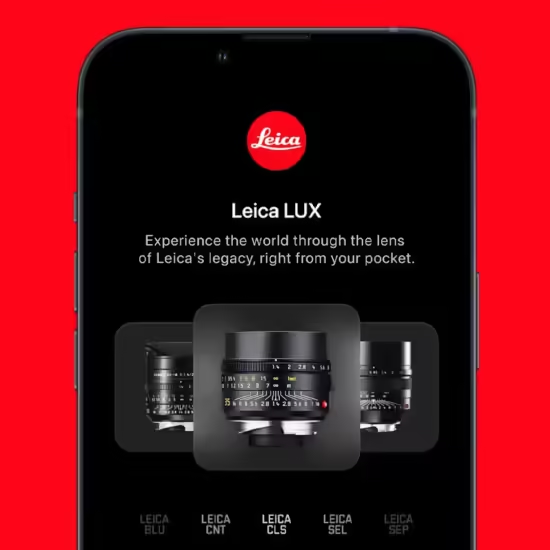eSIM: A Technological Powerhouse poised to Disrupt
The cellular landscape is on the cusp of a paradigm shift, with eSIM emerging as a potential game-changer. This article, delves into the compelling rise of eSIM technology in smartphones, exploring the driving forces behind its adoption and the hurdles yet to be surmounted. eSIM mobile industry disruption
eSIM: A Technological Powerhouse poised to Disrupt
eSIM, or embedded Subscriber Identity Module, signifies a revolutionary miniaturized chip embedded directly within a smartphone. Unlike its traditional SIM card counterpart, eSIM offers a plethora of advantages, including:
- Simplified Switching: Effortlessly switch between mobile carriers without physically swapping SIM cards.
- Enhanced Roaming: Enjoy seamless connectivity and potentially more affordable data plans when traveling abroad.
- Environmental Benefits: Reduce plastic waste by eliminating the need for physical SIM cards.
- Security Fortification: Experience superior security measures due to the tamper-proof nature of eSIMs.
The eSIM Adoption Trajectory: A Growth Spurt on the Horizon
The eSIM landscape is poised for exponential growth. CCS Insight, a leading technology research firm, predicts a staggering 150% surge in eSIM adoption by 2028. This remarkable growth trajectory is primarily attributed to:
- Apple’s Pioneering Influence: Apple’s introduction of the first eSIM-only iPhone in 2022 served as a significant catalyst, prompting other manufacturers to follow suit.
- Android’s Gradual Embrace: While initially lagging behind, Android device manufacturers are increasingly recognizing the potential of eSIM and integrating the technology into their smartphones.
Key Players in the eSIM Ecosystem
The eSIM revolution is not happening in isolation. It’s a collaborative effort involving several key players, each with a crucial role to play:
-
Mobile Network Operators (MNOs): MNOs, such as AT&T, Verizon, T-Mobile in the US, or Deutsche Telekom, Vodafone, and Orange in Europe, are at the forefront of eSIM adoption. They provide the eSIM profiles and manage the activation process for users. Their support is essential for widespread eSIM adoption, as they educate consumers, offer competitive eSIM plans, and ensure seamless network switching experiences.
-
Smartphone Manufacturers: The biggest names in the smartphone industry, including Apple, Samsung, Google, and Xiaomi, are driving eSIM adoption by incorporating the technology into their latest models. Apple, with its eSIM-only iPhone 14 lineup, has been a significant catalyst. Samsung, Google, and other Android manufacturers are following suit, expanding the range of eSIM-compatible devices available to consumers.
-
eSIM Infrastructure Providers: Behind the scenes, companies like Thales, G+D Mobile Security, and Workz specialize in providing the technological infrastructure that powers eSIM services. They develop and manage the Subscription Manager Data Preparation (SM-DP+) and Subscription Manager Secure Routing (SM-SR) platforms, which are essential for secure eSIM provisioning and lifecycle management.
-
Other Stakeholders: The eSIM ecosystem also includes device management platforms, IoT connectivity providers, and regulatory bodies. These players contribute to the overall growth and development of eSIM technology, ensuring its security, interoperability, and compliance with industry standards.
The collaboration among these key players is crucial for the continued growth and success of eSIM technology. As MNOs expand their eSIM offerings, smartphone manufacturers integrate eSIM into more devices, and infrastructure providers enhance their platforms, the eSIM ecosystem will continue to evolve, offering consumers more choice, convenience, and flexibility in managing their mobile connectivity.
North America Takes the Lead: A Region Forging Ahead
North America has emerged as a frontrunner in eSIM adoption, boasting over half of the world’s eSIM users. This dominance can be attributed to a combination of factors, including:
- Strong Carrier Support: A significant number of North American mobile carriers actively endorse eSIM technology.
- Consumer Awareness: A growing awareness of eSIM’s benefits among North American consumers is further accelerating its adoption.
Conquering Challenges: Hurdles to Overcome
Despite the promising outlook, eSIM adoption still faces some roadblocks:
- Limited Awareness: A significant portion of the global population remains unfamiliar with eSIM technology and its functionalities.
- Educational Gap: Many users lack a comprehensive understanding of the advantages eSIM offers.
- Potential Security Concerns: Unfounded anxieties regarding the security of eSIMs persist among some users.
The Future of eSIM: A Landscape Brimming with Potential
The future of eSIM appears bright. As these challenges are addressed through targeted educational initiatives and robust security measures, eSIM has the potential to revolutionize the mobile industry by:
- Empowering Consumers: Granting users greater control and flexibility in managing their mobile subscriptions.
- Boosting Innovation: Ushering in a new era of mobile service innovation, fostering the development of novel data plans and connectivity solutions.
- Environmental Sustainability: Contributing to a more sustainable future by minimizing plastic waste associated with traditional SIM cards. eSIM mobile industry disruption
Frequently Asked Questions (FAQs)
- What is eSIM?
eSIM, or embedded Subscriber Identity Module, is a miniaturized chip embedded directly within a smartphone, eliminating the need for a physical SIM card.
2. What are the benefits of eSIM?
eSIM offers a multitude of benefits, including simplified switching between mobile carriers, enhanced roaming experiences, environmental advantages, and bolstered security.
3. Is eSIM secure?
Yes, eSIM is generally considered to be more secure than traditional SIM cards due to its tamper-proof nature.
4. How can I switch to eSIM?
The process for switching to eSIM varies depending on your mobile carrier. Contact your carrier to inquire about their eSIM support and activation procedures. eSIM mobile industry disruption
5. What are the limitations of eSIM?
Currently, the primary limitation of eSIM is a lack of widespread awareness and understanding among users. However, educational initiatives are underway to bridge this knowledge gap.
- AIRALO
-
eSIM for
Europe
39 countries
-
1 GB – 7 days – €4.27
3 GB – 30 days – €11.09
10 GB – 30 days – €31.57
- AIRHUB
-
eSIM for
Europe
34 countries
-
1 GB – 7 days – €2.99
3 GB – 30 days – €5.12
10 GB – 30 days – €11-09
- aloSIM
-
eSIM for
Europe
32 countries
-
1 GB – 7 days – €5.00
3 GB – 30 days – €13.00
10 GB – 30 days- €36.00
- GigSky
-
eSIM for
Europe
36 countries
-
1 GB – 7 days – €6.99
3 GB – 15 days – €11.19
10 GB – 30 days – €27.99
- iRoamly
-
eSIM for
Europe
39 countries
-
1 GB – 7 day – €6.83
3 GB – 15 days – €10.24
10 GB – 30 days – €18.77
- Maya Mobile
-
eSIM for
Europe
34 countries
-
1 GB – 7 days – –
5 GB – 15 days – €5.99
10 GB – 30 days- €13.99
- NOMAD
-
eSIM for
Europe
36 countries
-
1 GB – 7 days – €4.71
3 GB – 15 days – €10.27
10 GB – 30 days – €15.41
- UBIGI
-
eSIM for
Europe
29 countries
-
500 MB – 1 day – €2.00
3 GB – 30 days – €8.00
10 GB – 30 days – €19.00
- VOIA
-
eSIM for
Europe
34 countries
-
1 GB – 7 days – €2.69
3 GB – 15 days – €5.05
10 GB – 30 days- €11.70



















